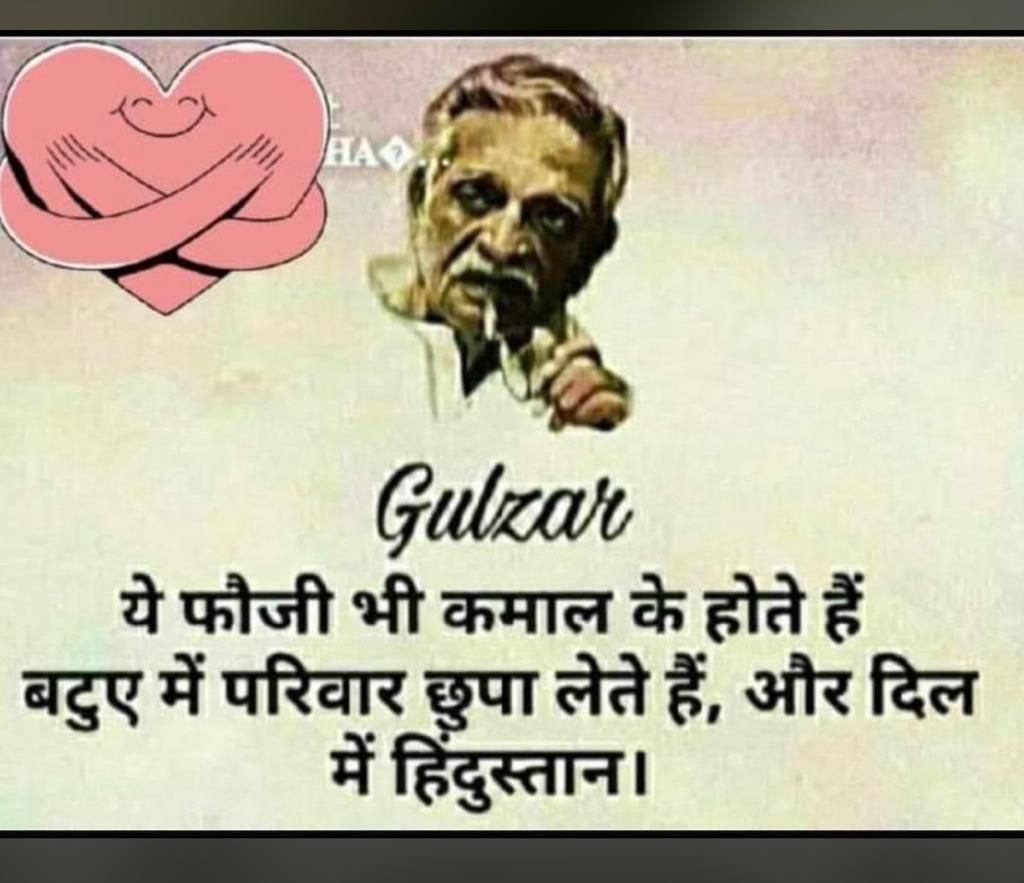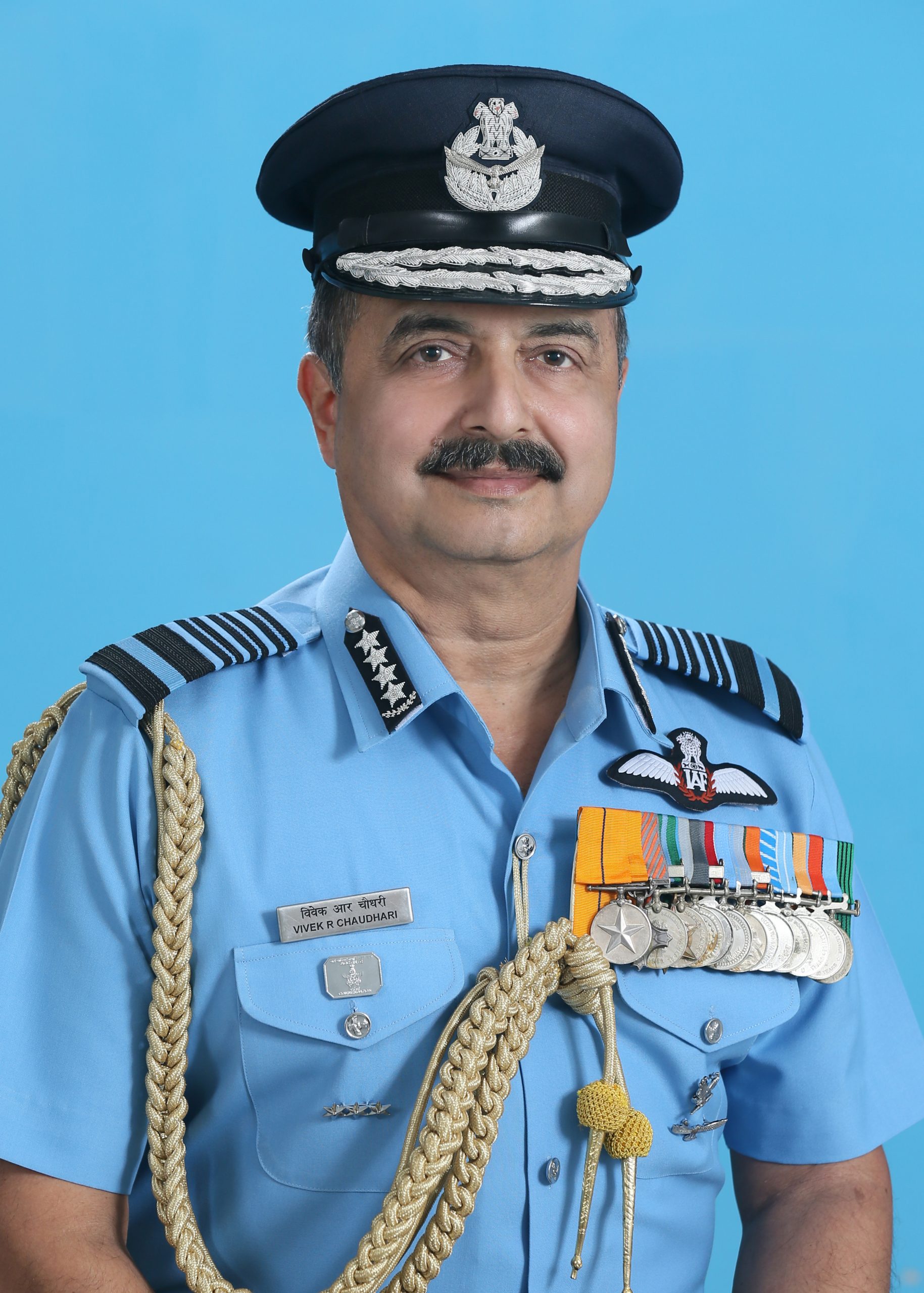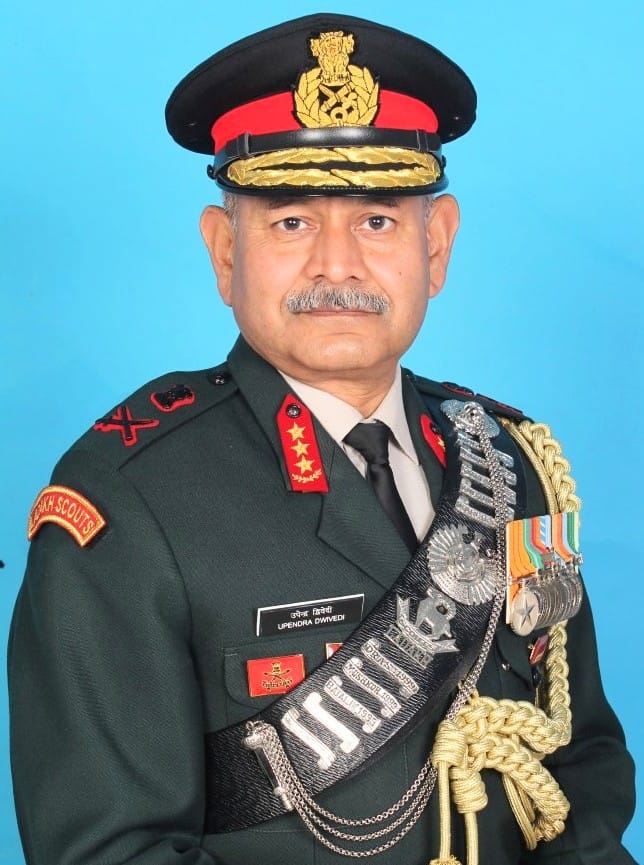CLICK TO OPEN LETTER

LETTER TO PM FOR ANNOMILIES :OROP





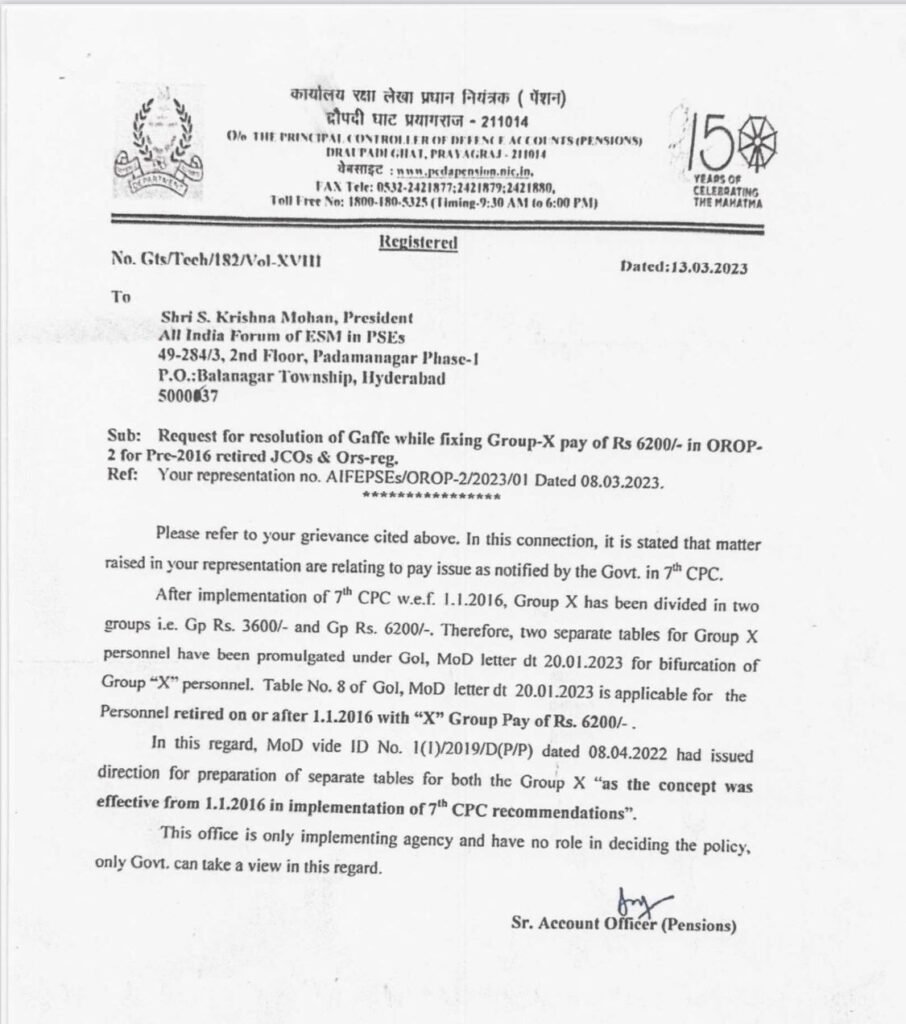












Washington, March 31
Some of the steps being taken by Beijing along the India-China border has been “provocative”, a top White House official has said while reaffirming that the United States is “destined” to work more closely with India.
Kurt Campbell, the Deputy Assistant to the US President and Coordinator for the Indo-Pacific, told a Washington-based think-tank on Thursday that India is not an ally of the United States and will never be so.
“But it does not mean that we will not be close partners and share many things. That’s how we need to understand the role that India will play as a great nation on the global stage.
“We want to encourage that and support that and deepen this relationship, which is already very strong, probably the strongest people-to-people relationship of any country that the United States has on the global stage,” he said.
Campbell said that the India-US relationship “is the most important bilateral relationship for the United States in the 21st century”.
“I believe we are destined to work more closely together. I believe that our people-to-people ties are strong, animate in a relationship that is becoming deeper, richer and more strategically important,” he said.
The think tank — Centre for a New American Security (CNAS) — in a report said that the India-China border intrusions and clashes have become more frequent and threaten to lead to all-out conflict.
The increased prospect of India-China border hostility has implications for the United States and its Indo-Pacific strategy between the two Asian giants, it said.
India’s engagement with China is “complex” and Chinese attempts to unilaterally alter the status quo along the Line of Actual Control (LAC) in eastern Ladakh starting from April-May 2020 seriously disturbed the peace and tranquility in border areas and impacted overall ties, the Ministry of External Affairs (MEA) said in a report this month.
In its annual report for 2022, the MEA said the External Affairs Minister conveyed to his Chinese counterpart that the restoration of normalcy in ties will require the restoration of peace and tranquility along the frontier.
“India’s engagement with China is complex. The two sides have agreed that pending the final settlement of the boundary question, maintenance of peace and tranquility in the border areas is an essential basis for the overall development of the bilateral relationship,” the MEA’s annual report said.
Meanwhile, the CNAS report said that Indian officials believe China is trying to contain India by forcing it to divert more resources into defending simultaneously both its western border with Pakistan and eastern flank with China and by weakening its willingness and ability to challenge Chinese ambitions to dominate the region.
Campbell told the think-tank, “Some of the steps that China has taken along this vast 5,000-mile border had been provocative and deeply concerning to Indian partners and friends.” The think-tank’s report, authored by Lisa Curtis and Derek Grossman, has made several recommendations to help deter and respond to further Chinese aggression along the border with India.
Prominent among them include the United States should elevate Indian territorial disputes with China on par with Beijing’s assertiveness against other US allies and partners in the Indo-Pacific and ensure this is reflected in all national security-related documents and speeches.
It also recommended that the US offer India the sophisticated military technology it requires to defend its borders and initiate the co-production and co-development of military equipment and assist India in strengthening its maritime and naval capacity.
The think-tank also urged the US to conduct joint intelligence reviews with India to align assessments of Chinese plans and intentions along the Line of Actual Control (LAC) and enhance coordination with Indian officials on contingency planning in the event of a future India-China conflict.
It asked the US to criticise Beijing’s “efforts at land-grabbing” in multilateral forums, including the UN, Shangri-La Dialogue, G20, and East Asia Summit and be prepared to extend full support to India in the event of another border crisis or conflict.
Message Pakistan and enlist help from its other important partners to convey similar points about the need to stay neutral in the event of a potential future India-China border flare-up, the report said.
Responding to a question, Campbell said there has been an exponential increase in engagement in virtually every area.
“We just concluded discussions in a form called ICET in which the Indian National Security Advisor brought the highest-ranking group of Indian technologists ever to come to any country, and came to the United States to talk about how to partner on areas going forward,” Campbell said.
“We’re working more on defence-related issues on people to people. We want more Indian students in our universities. We want more American students in Indian universities. We want more people-to-people, university partnerships more generally, and health partnerships. We have just announced efforts to work together in space. So the agenda is extraordinarily rich. The ambitions are high,” he added.



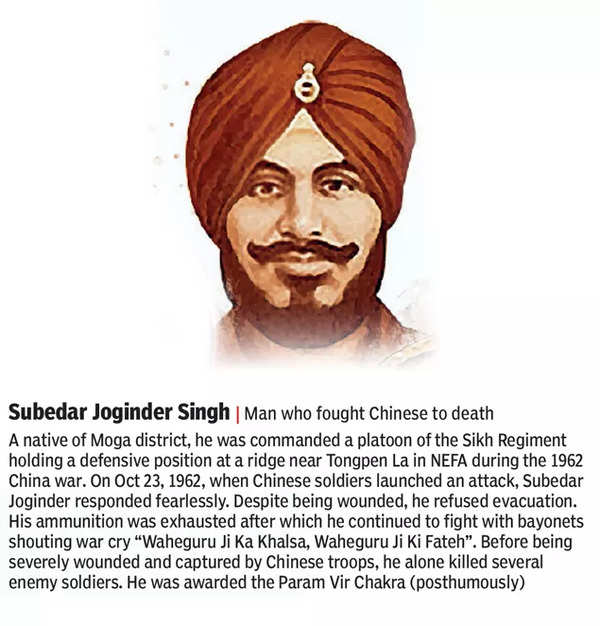








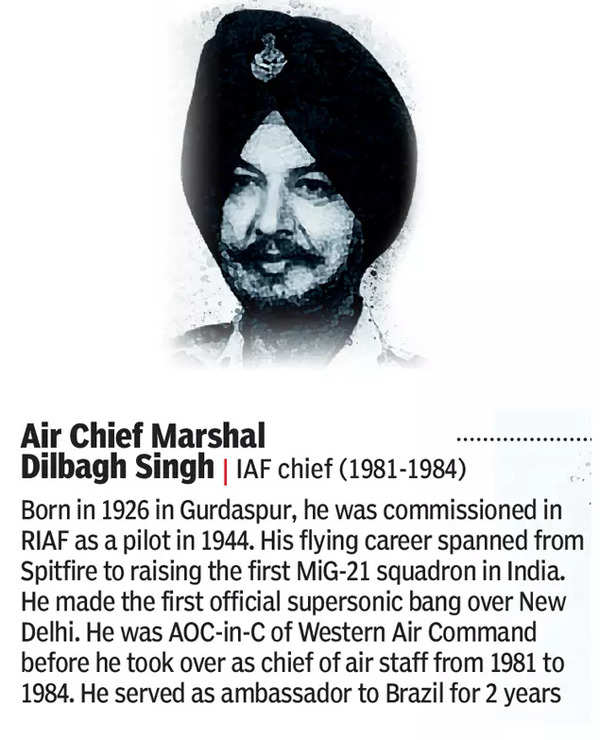









Sanjeev Singh Bariana
Chandigarh, March 30
Most of the Sikhs in Canada don’t want any Khalistan, said Canada’s first cabinet minister of Indian origin Herb Dhaliwal during an interview with The Tribune correspondent here today.
Replying to a question on the noises against the Indian government, particularly in the Canadian media on pro-Khalistan activist Amritpal Singh, the former minister said, “The demand for Khalistan comes from very small and insignificant groups that have their own purposes.”
A former minister for National Revenue, Minister of Fisheries and Ocean and Minister for Natural Resources between 1997 and 2003, Dhaliwal said, “I have said even before that instead of Khalistan, there is a palpable demand for punishing those behind the 1984 riots. I had raised the issue with former Prime Ministers IK Gujral, Manmohan Singh and Atal Bihari Vajpayee. The wounds of the 1984 riots have not yet healed. People want answers.”
Replying to the incidents of India’s High Commission in Ottawa cancelling its event last week when protesters wielding swords came in response to rumours of the arrest of fugitive Amritpal Singh, Dhaliwal said, “These flags, definitely, don’t reflect the voice of the majority.”
Talking about a heavy rush of Indian students, particularly Punjabis, to Canada, the former cabinet minister, said, “Youngsters are moving to Canada, Australia, the UK, the USA and other places because there are very few opportunities here. There are reports of students being fleeced by certain fake institutes abroad. However, the situation is also a reflection of the desperation among students here. Improvement of the existing system is the only way ahead.”
Dhaliwal feels, “Youngsters, born and brought up in Canada, don’t feel any pull from the land of their ancestors. They love travelling to Machu Picchu, Mexico and European countries instead. Traffic rush and poor sanitary conditions are the biggest drawbacks they quote for not agreeing to travel to India.”
Accepting that there has been a reduction in welfare projects initiated by the NRIs in their land, Dhaliwal said, “On an initiative of the Indo-Canadian Friendship Society of British, headed by Gurdev Singh Gill, we did launch a pilot project of improving sanitation, sewerage and pavers in 20 villages. Beside donations from Canada, Capt Amarinder Singh and Parkash Singh Badal governments provided matching grants for our project.”
Punish those behind 1984 riots
I have said even before that instead of Khalistan, there is a palpable demand for punishing those behind the 1984 riots. I had raised the issue with former Prime Ministers IK Gujral, Manmohan Singh and Atal Bihari Vajpayee. The wounds of the 1984 riots have not yet healed. People want answers. — Herb Dhaliwal, ex-minister, Canada

New Delhi, March 30
National Security Adviser (NSA) Ajit Doval on Thursday discussed the heightened pro-Khalistan activity in the UK with its NSA Tim Barrow, who was on his way to Kerala to attend the G20 Sherpas’ meeting.
India had already summoned a senior UK diplomat late March 19 and sought an explanation for the complete absence of British security that allowed separatist and extremist elements to enter the Indian High Commission in London and replace the Tricolour with the Khalistani flag. Doval had met Barrow, also United Kingdom’s G20 Sherpa, in London in February during his way back from the US. Incidentally, British PM Rishi Sunak had “joined” the meeting.
Barrow’s visit follows that of MI6 chief Richard Moore, who had recently attended a gathering of over 25 intelligence chiefs hosted by Doval.
The UK is now heavily investing in the Indo-Pacific as well and is part of a trilateral deal with the US and Australia to build nuclear-powered submarines for Canberra. It has not won a substantial defence order from India after the deal for Hawk advanced jet trainers.

Mukesh Ranjan
New Delhi, March 30
A Pakistani boat, which was intercepted in December last year off the Gujarat coast, was meant to deliver a consignment of arms and drugs in India to fund terrorist activities in Punjab and other states, the National Investigation Agency (NIA) has alleged in its FIR in the case.
In the FIR, a copy of which is with The Tribune, the NIA said Pakistan’s Balochistan-based Poshani sea shore was used to send the boat “AL Soheli”.
Drug syndicate busted; 7 held
10 of balochistan were arrested
 Earlier this month, the NIA registered the FIR against 10 accused belonging to Balochistan region. It mentioned that six foreign-made pistols with six magazines and 120 live cartridges along with 40 kg of narcotics, including heroin, were seized following the interception of the boat on December 28 last year near Okha in Gujarat. The NIA said the consignment was sent by a drug mafia run by Haji Salim Baloch Wala of Balochistan. The NIA registered the case under Section 154 CrPC and various provisions of the Narcotic Drugs and Psychotropic Substances Act, 1985, Unlawful Activities (Prevention) Act, 1967, and the Arms Act, 1959.
Earlier this month, the NIA registered the FIR against 10 accused belonging to Balochistan region. It mentioned that six foreign-made pistols with six magazines and 120 live cartridges along with 40 kg of narcotics, including heroin, were seized following the interception of the boat on December 28 last year near Okha in Gujarat. The NIA said the consignment was sent by a drug mafia run by Haji Salim Baloch Wala of Balochistan. The NIA registered the case under Section 154 CrPC and various provisions of the Narcotic Drugs and Psychotropic Substances Act, 1985, Unlawful Activities (Prevention) Act, 1967, and the Arms Act, 1959.
Those named in the FIR were Kadarbaksh Umetan Baloch (55), Ismail Sabzal (25), Amanulla Mussa Baloch (30), Allabaksh Hatar Baloch (40), Goharbaksh Dilmurad Baloch (25), Anmal Pulan Baloch (35), Gulmohammad Hatir Baloch (25), Andamail Boher Baloch (20), Abdulgani Janglyan Baloch (45) and Abdulhakim Dilgurad Baloch (23).

Fort Campbell (US), March 30
Nine people were killed in a crash involving two Army Black Hawk helicopters in Kentucky, a military spokesperson said.
Nondice Thurman, a spokesperson for Fort Campbell, said Thursday morning that the deaths happened the previous night in southwestern Kentucky during a routine training mission.
A statement from Fort Campbell says the two HH-60 Black Hawk helicopters, part of the 101st Airborne Division, crashed around 10 p.m. Wednesday in Trigg County, Kentucky. The 101st Airborne confirmed the crash about 30 mile (48 kilometres) northwest of Fort Campbell. The crash is under investigation.
“Right now our focus is on the Soldiers and their families who were involved,” the statement added.
Kentucky Gov. Andy Beshear had said earlier that fatalities were expected, adding that police and emergency officials were responding.
“The crash occurred in a field, some wooded area,” Kentucky State Police Trooper Sarah Burgess said at a news briefing. “At this time, there are no reports of residence damage.” Fort Campbell is located near the Tennessee border, about 60 miles (97 kilometres) northwest of Nashville, and the crash occurred in the Trigg County, Kentucky, community of Cadiz.
Nick Tomaszewski, who lives about a mile from where the crash occurred, said he saw two helicopters flying over his house moments before the crash.
“For whatever reason last night my wife and I were sitting there looking out on the back deck and I said “Wow, those two helicopters look low and they look kind of close to one another tonight,” he said.
The helicopters flew over and looped back around and moments later “we saw what looked like a firework went off in the sky.” “All of the lights in their helicopter went out. It was like they just poofed … and then we saw a huge glow like a fireball,” Tomaszewski said.
Flyovers for training exercises happen almost daily and the helicopters typically fly low but not so close together, he said.
“There were two back to back. We typically see one and then see another one a few minutes later, and we just saw two of them flying together last night,” he said.
Members of the Kentucky Senate stood for a moment of silence Thursday morning in honour of the crash victims.
“We do not know the extent of what has gone on, but I understand it is bad and there has been a substantial loss of life of our military,” Senate President Robert Stivers told the sombre chamber.
Last month, two Tennessee National Guard pilots were killed when their Black Hawk helicopter crashed along an Alabama highway during a training exercise.
New Delhi, March 30
The Ministry of Defence today announced Rs 30,400 crore worth of contracts for missiles, warships and radars, with focus on indigenous manufacturing and strengthening air defence and attack abilities at sea and land.
A contract was inked with BrahMos Aerospace Private Limited (BAPL) for procurement of long-range next generation maritime mobile coastal batteries of the BrahMos missiles at a cost of more than Rs 1,700 crore. The delivery of the missiles is scheduled to commence from 2027.
BrahMos has already been inducted into the armed forces. Its range was capped at 290 km as per the Missile Technology Control Regime (MTCR) regulations. India entered the MTCR regime in June 2016, allowing extension in range. The new missiles will go beyond 300 km.
Procurement pacts
The MoD has also signed contracts for improved Akash weapon system and 12 weapon-locating radars ‘Swathi’ for the Army at a cost of more than Rs 9,100 crore.
The contract for procuring improved Akash weapon system will add two more regiments of the system to Army’s air defence along the northern borders with China. It has an improved seeker technology and a 360-degree capability. Its indigenous content will go up from the present 82 per cent to 93 per cent by 2026-27. Bharat Dynamics Limited will execute it for Rs 8,160 crore. Around 60 per cent of the project cost will be awarded to the private industry, including MSMEs. A contract for Swathi radars was signed with Bharat Electronics Limited (BEL) at a cost of over Rs 990 crore. It is capable of locating enemy guns, mortars and rockets. The radars will be inducted into the armed forces within 24 months.
The MoD has signed contracts with Indian shipyards for acquisition of 11 next generation offshore patrol vessels and six next generation missile vessels (NGMVs) at an overall cost of Rs 19,600 crore. The contract for acquisition of 11 offshore patrol vessels was signed with Goa Shipyard Limited (GSL) and Garden Reach Shipbuilders and Engineers (GRSE), Kolkata, at a cost of Rs 9,781 crore. Of the 11 ships, seven will be indigenously designed, developed and manufactured by GSL and four by GRSE. The delivery of the ships is scheduled to commence from September 2026.
The contract for acquisition of six missile vessels was signed with Cochin Shipyard Limited (CSL) at a cost of Rs 9,805 crore. The delivery of ships is scheduled to commence from March 2027.

New Delhi, March 30
The defence ministry on Thursday signed a contract with Bharat Electronics Limited for the procurement of 13 Lynx-U2 fire control systems for the Navy at a cost of over Rs 1,700 crore, officials said.
The Lynx-U2 system is a naval gun fire control system designed and developed indigenously. It is capable of accurately tracking and engaging targets amid sea clutter as well as air or surface targets, the government said in a statement.
The ministry signed a contract with BEL, Bengaluru for “procurement of 13 Lynx-U2 fire control systems for the Indian Navy at a total cost of over Rs 1,700 crore under Buy {Indian – IDMM (Indigenously Designed Developed and Manufactured)}.
